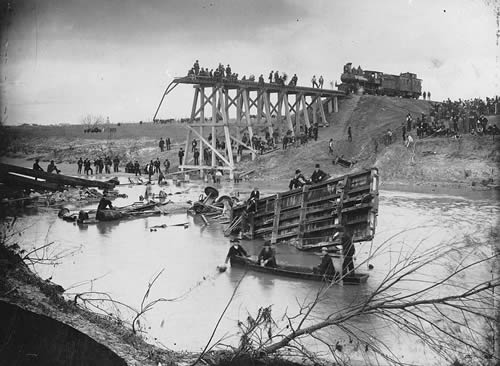|
There
are times when things just sort of "pop up" when I am doing research
for a column. For instance, one of my colleagues here at the newspaper
asked me when the railroad quit providing service to Hallettsville.
I was involved with researching another story when that question was
asked, so I put it in my brain's library of things to do and went
on about my business.
It seems, however, that just like my colleague; the question about
the railroad was not going to be put off for long. While browsing
through some old newspapers, lo and behold, up pops a story about
the railroad wanting to leave town.
That story was in the Dec. 2, 1949, issue of The Lavaca County
Tribune; the headline, along with a sub-head, read "Hallettsville
to Lose Passenger Train Service - Discontinuance of 'Dinky' Trains
is Asked Due to Financial Loss."
The Texas and New Orleans Railroad Company asked the Texas Railroad
Commission for permission to cease operation of Southern-Pacific passenger
trains Numbers 309 and 310 that ran between Houston
and Kenedy.
According to the newspaper, "These are the 'dinky' trains that come
into Hallettsville from the west in the morning and from the east
at night." Evidently the passenger trains were causing the company
to lose a lot of money. So, they pulled the plug on the rail service
that the people of Hallettsville
had depended on for years.
Figures were given about the money lost. From January through October
of 1949, the company had expenses of $101,042 and their revenue was
$52,404. The company reported that they would lose over $58,000 annually.
The story also included information that these losses did not include
what the company was spending on maintenance to the tracks and buildings.
As a result of these financial problems, not only did the passenger
train service cease, trucking companies began to haul commercial freight.
Days of the railroad service to many small
Texas towns ceased to exist.
I do not know if 1949 was the last year for train service in Hallettsville,
but there is plenty of information about when it started. South of
town, near the Lavaca River, stands a Texas Historical Marker (Location:
Main St. & Russell St., Halletsville). It was erected by the Texas
Historical Commission in 2009. |
 |
Wreck of the
Don Milo
Photo courtesy Courtesy of The Portal to Texas History |
The marker was
put there to designate the location of a train wreck and it is titled,
"The Wreck of the Don Milo." The inscription on the marker not only
has information about the train wreck; it also includes information
about the beginning of rail service to Hallettsville.
The entire wording on the marker is as follows: "The San Antonio and
Aransas Pass Railway Company (S. A. & A. P.) was chartered by the
State of Texas in 1884 to connect the city of San
Antonio with Aransas Bay, and the rail line officially came to
Hallettsville on April 23, 1887. A large celebration on that date
brought 5,000 to town to witness the completion of the track over
the Lavaca River around noon, and the evening arrival of the first
train. "The S. A. & A. P. railway met financial ruin when a disastrous
train wreck occurred on the wooden bridge over the Lavaca River on
January 2, 1890. The river had risen to within fifteen feet of the
bridge's rails because of heavy rains. The engineer crossed the river
in order to reach the water tank at the other side because the water
was necessary to power the train's steam-driven engine.
"The engineer then crossed back over the bridge to reattach the remaining
cars. Upon preparing to cross the bridge with the entire train, the
engineer realized that the trestle had been washed away by the surging
water.
"Although the engineer was able to stop the train at the edge of the
river, the weight of the train's cargo caused it to plunge into the
raging floodwaters below. The train carried liquor as part of its
cargo, and the consumption of the liquor by spectators added to the
confusion caused by the crowd of onlookers that soon appeared at the
site. "The wreck of the Don Milo, engine no. 54, caused additional
problems for the S. A. & A. P., which had already been experiencing
financial difficulties. The resulting lawsuits forced the company
to reorganize, and the S. A. & A. P. was acquired by the Southern
Pacific Transportation Company in 1892." |
|
|
